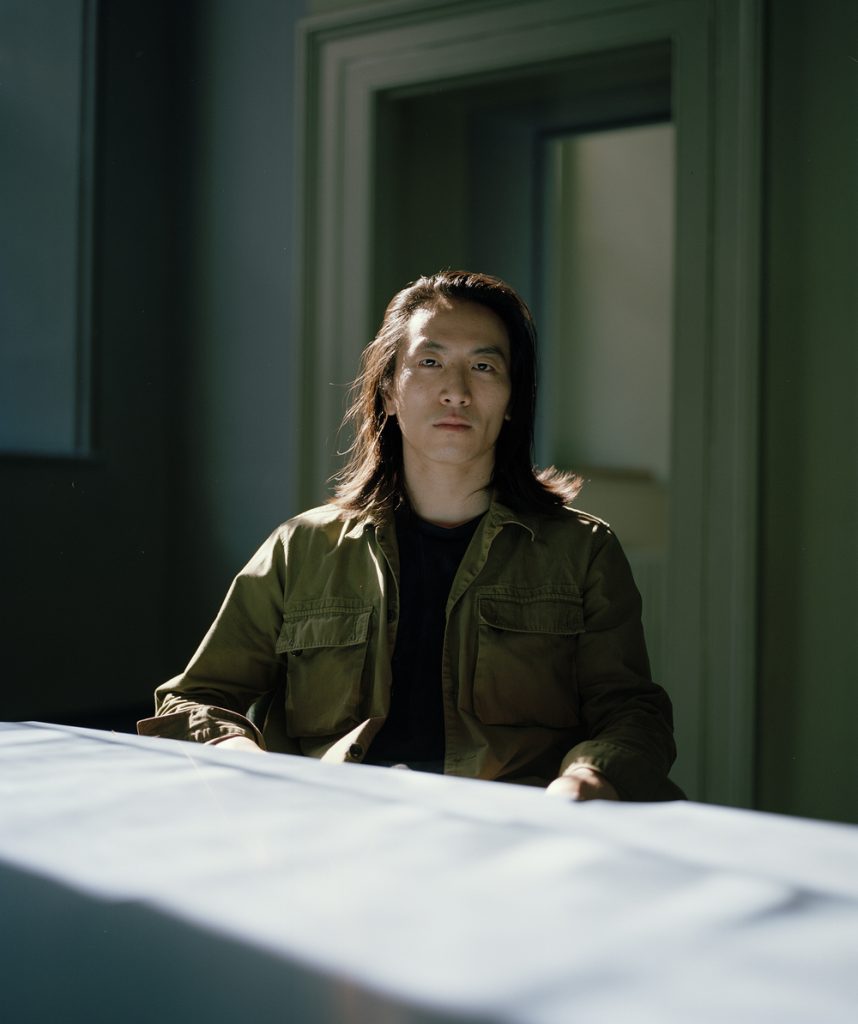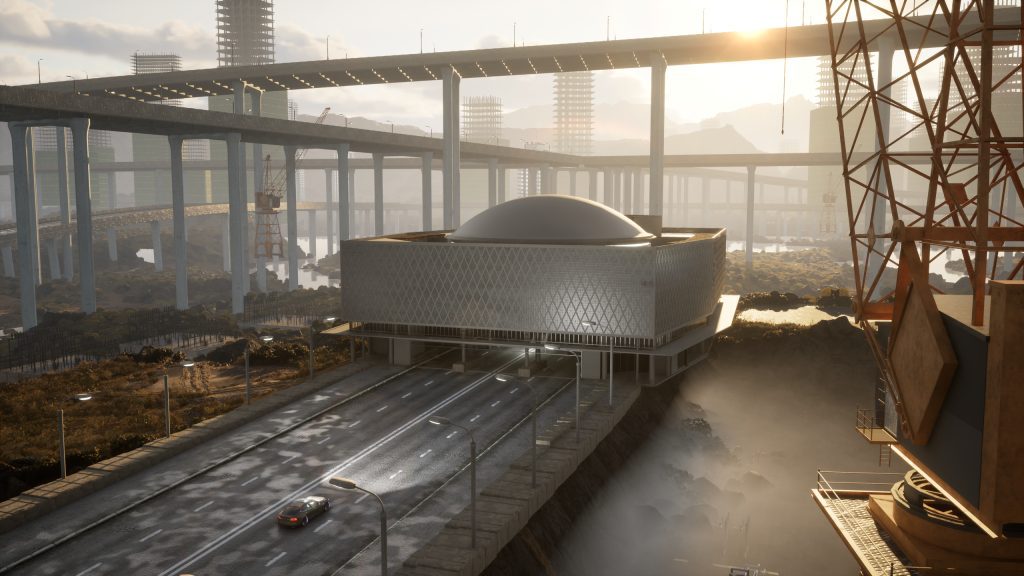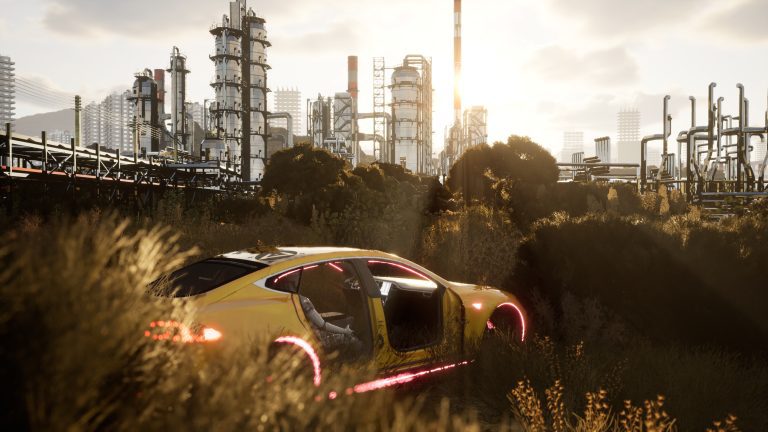
Photography by ILYES GRIYEB

Discover the depths of “NOX”, the LAS Art Foundation exhibition that envisions a future where the fictional realm confronts the psychological implications of self-driving cars. With an exclusive interview, the exhibition’s curator Carly Whitefield delves into the groundwork and creative orchestration of “NOX” from inception to execution, unravelling artist Lawrence Lek‘s intent behind this speculative sentient city. Discover how “NOX” emerges as a compelling narrative that reflects our evolving relationship with technology through a blend of present-day AI integration and futuristic projections.
hube: Could you share some insights into the research and planning involved in curating an exhibition like “NOX” from concept to execution?
Carly Whitefield: LAS Art Foundation has been in awe of Lawrence Lek’s speculative world-building and visionary use of simulation and game engines for some time and began a conversation with him in 2020. As site-specificity is a key aspect of Lek’s approach, the project really took shape after we confirmed the multi-story former department store at Kranzler Eck as the exhibition venue. From there, Lek developed a concept that marries the specificity of this iconic venue with his research on the smart city and autonomous transportation. Working at this ambitious scale, the LAS team collaborated closely with the artist and his creative team, and all exhibition vendors to plan, produce and run the exhibition.
The research for this project stems from Lek’s PhD dissertation ‘Cinematic Assemblage: Sinofuturist Worldbuilding and the Smart City’ (2021) and builds upon the “Sinofuturist Cinematic Universe” he’s been mounting across films, installation, video games, and soundtracks. These were valuable research tools for the LAS team in shaping discussions with the artist and in turn, the exhibition’s interpretation, talks programme, and “Impulse” tour series, led by local practitioners in diverse fields, from Buddhism to expanded cinema to AI training.
h: Were there any significant challenges or unexpected hurdles you encountered while curating “NOX”? If so, how did you overcome them?
CW: Exhibiting large-scale art installations in venues that are not purpose-built comes with rewards, surprises, and challenges alike and requires a lot of creativity. NOX’s success is very much owing to the artist’s thoughtful response to the space and flexibility in shaping the work, and to the extended production team’s expertise in navigating the parameters and unknowns of working in listed spaces.
The sheer size of the work has its challenges, too: Lek’s practice of architectural simulation meant that every change to the exhibition design across three floors needed to be changed in the simulated spaces seen in the videos and in the game. But, as always, some hurdles arise when we are prompted to try new approaches: Kranzler Eck’s beautiful dome and central void require specific acoustic approaches that led us to consider locative audio headsets. This became a key part of our work and conceptually strengthened the exhibition as an open-world environment for exploration, with audiences being able to generate soundscapes through their movements.
Taking such risks pays off: audiences enjoy experiencing long-form artworks that unfold across such vast space and seem very appreciative to be back inside or explore one of Berlin’s unique architectural sites for the first time.

